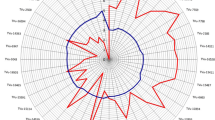Abstract
The development of a mass-rearing technique of Mantea testulalis by the ICIPE has allowed us to start extensive work on cowpea resistance to the legume pod-borer. A preliminary field observation showed that the cowpea resistance is on the low level. Therefore, our effort initially concentrated on the development of new methods and techniques which were sufficiently sensitive to separate lines possessing small differences of resistance. Eight different treatments were used to develop the methodology of cowpea screening under artificial infestation with Maruca larvae and eggs in the screenhouses and seven treatments in the field.
Plant growing stage has modified the expression of cowpea resistance to Maruca larvae. Five-seven shoots stage (not younger) was found to be most suitable for screening for resistance in pre-flowering period. By using five eggs/plant in pre-flowering stage on cowpea plants grown on the ground, it was possible to differentiate between the resistant and susceptible lines. The standard error between plants treated with 10 eggs/plant treatment was lower than those with five eggs/plant treatment. Therefore, if laboratory colony allows the higher infestation of 10 eggs/plant, it is recommended. Using 10 or 20 eggs/plant in flowering stage correctly segregated cowpea lines for resistance and susceptibility based on larval survival and damage level of flower buds, flowers and pods.
Similar content being viewed by others
References
Galun R. L. (1972) Genetic interelationships between host plants and insects. J. Environ. Qual. 1, 259–265.
Jackai L. E. (1981) Relationship between cowpea crop phenology and field infestation by the legume pod borer, Maruca testulalis. Ann. ent. Soc. Am. 74, 402–408.
Lowe H. J. B. (1978) Possible advantages of small differences in resistance to aphids. In Plant Breeding for Resistance to Insect Pests. Consideration About the Use of Induced Mutations. IAEA, Vienna, 1978, pp. 91–99.
Ochieng R. S., Okeyo-Owuor J. B. and Dabrowski Z. T. (1981) Studies on the legume pod-borer. Maruca testulalis (Geyer)—II. Mass rearing on natural food. Insect Sci. Application 1, 269–272.
Okeyo-Owuor J. B. and Ochieng R. S. (1981) Studies on the legume pod-borer, Maruca testulalis (Geyer)—I. Life cycle and behaviour. Insect Sci. Application 1, 263–268.
Singh S. R. and Jackai L. E. (1983) The legume pod-borer, Maruca testulalis (Geyer): past, present and future research. Insect Sci. Application. (In press).
Author information
Authors and Affiliations
Rights and permissions
About this article
Cite this article
Dabrowski, T., Bungu, D.O.M. & Ochieng, R.S. Studies on the Legume Pod-Borer, Maruca Testulalis (Geyer)—III. Methods Used in Cowpea Screening for Resistance. Int J Trop Insect Sci 4, 141–145 (1983). https://doi.org/10.1017/S1742758400004148
Received:
Published:
Issue Date:
DOI: https://doi.org/10.1017/S1742758400004148




